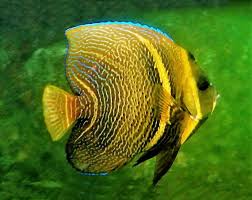Exploring Dragon Symbols in Traditional Chinese Art
The dragon, a mythical creature revered in Chinese culture, has long been a prominent symbol in traditional Chinese art. Representing power, prosperity, and divine authority, the dragon is more than an artistic motif—it is a cultural emblem that connects China’s history, philosophy, and spirituality. From ancient carvings and imperial robes to delicate porcelain and dramatic paintings, dragons are omnipresent in the artistic legacy of China. This article delves into the multifaceted symbolism of dragons in traditional Chinese art and their enduring influence on cultural identity.
The Cultural and Mythological Roots of Dragon Symbols
Dragons, or “long” (龙) in Chinese, are central figures in Chinese mythology. Unlike their Western counterparts, Chinese dragons are benevolent and auspicious, symbolizing cosmic harmony and the natural order. According to legend, dragons control rain, rivers, and seas, making them vital to agricultural societies.
The dragon’s attributes—its snake-like body, fish scales, eagle claws, and deer antlers—embody a fusion of strength, grace, and adaptability. These features reflect the Chinese philosophical principle of “yin-yang”, the balance of opposing forces. This duality makes the dragon a fitting symbol for the interconnectedness of heaven, earth, and humanity, a theme that pervades traditional Chinese art.
Dragons in Ancient Chinese Carvings and Sculptures
One of the earliest depictions of dragons in Chinese art dates back to the Neolithic period, around 6000 BCE. The Hongshan culture of northeastern China produced jade artifacts featuring coiled dragon motifs, such as the iconic “C-shaped” jade dragons. These pieces, often used in rituals, signified spiritual power and connection to the divine.
During the Shang and Zhou Dynasties (1600–256 BCE), dragons appeared in bronze vessels and oracle bones. These carvings were not merely decorative; they served religious and ceremonial purposes, symbolizing the dragon’s role as a mediator between the mortal and celestial realms.
In later dynasties, stone carvings of dragons adorned temples, palaces, and tombs. These grandiose sculptures highlighted the dragon’s protective qualities and reinforced its status as a guardian of sacred spaces.
The Dragon in Chinese Calligraphy and Painting
Traditional Chinese painting, particularly during the Song and Ming Dynasties, often featured dragons as central themes. The “ink-and-wash” style, a hallmark of Chinese art, brought the dragon to life with fluid, dynamic brushstrokes.
One famous example is the work of Chen Rong, a Song Dynasty artist renowned for his Nine Dragons scroll. This masterpiece, depicting nine dragons in swirling clouds and turbulent waters, exemplifies the dragon’s association with power and natural forces. Chen Rong’s ability to capture the dragon’s energy and majesty influenced generations of artists.
In calligraphy, the dragon is often invoked through the use of powerful, sweeping strokes. The dragon’s dynamic movement is mirrored in the bold and fluid lines of Chinese characters, symbolizing vitality and creativity.
Imperial Dragons: Symbols of Authority and Divinity
The dragon is deeply intertwined with imperial symbolism in China. During the Qing and Ming Dynasties, the dragon became the exclusive emblem of the emperor, representing his divine right to rule. The “Five-Clawed Dragon”, in particular, was reserved for imperial use, while commoners were forbidden from depicting dragons with five claws.
Imperial robes, or “dragon robes” (longpao), were intricately embroidered with dragon motifs, surrounded by clouds, waves, and mountains. These robes not only showcased the emperor’s authority but also conveyed his role as a bridge between heaven and earth.
In palaces, dragons adorned ceilings, pillars, and thrones, further emphasizing their association with power and protection. The Forbidden City in Beijing, a masterpiece of imperial architecture, features countless dragon motifs, each symbolizing the emperor’s omnipresence and divine mandate.
Dragons in Chinese Porcelain and Ceramics
Chinese porcelain, celebrated worldwide for its beauty and craftsmanship, frequently features dragon motifs. These designs are often rendered in blue-and-white ceramics, a style that gained prominence during the Ming Dynasty.
Dragons on porcelain typically appear amidst clouds and waves, reinforcing their role as rulers of the natural elements. These pieces were not only prized for their aesthetic value but also served as status symbols and diplomatic gifts, spreading Chinese culture across the globe.
In addition to tableware, larger ceramic works such as vases and tiles also incorporated dragon imagery. The intricate detailing of these dragons reflects the skill and creativity of Chinese artisans, making them treasures of cultural heritage.
Dragon Motifs in Chinese Textile Art
Textiles have long been a canvas for dragon symbolism in Chinese culture. Silk, a material synonymous with Chinese ingenuity, became a prominent medium for dragon motifs. Embroidered silk tapestries and garments often featured dragons intertwined with auspicious symbols such as the phoenix and peony.
In traditional bridal attire, dragon and phoenix patterns symbolize harmony and marital bliss, reflecting the cultural ideal of balance. Similarly, dragon designs on banners and flags during ceremonies conveyed strength, dignity, and protection.
Dragons in Chinese Folk Art and Festivals
Folk art, including paper cuttings, woodblock prints, and shadow puppetry, has also embraced dragon symbolism. These art forms, often associated with festivals and communal celebrations, bring the dragon to life in vibrant and accessible ways.
During the Dragon Boat Festival, dragon motifs adorn boats, banners, and decorative items. Similarly, in the Lantern Festival, dragon-shaped lanterns light up the night, symbolizing hope and prosperity. These folk art traditions ensure that the dragon remains a dynamic and cherished part of Chinese cultural expression.
Philosophical and Spiritual Dimensions of Dragon Art
In Daoist and Buddhist art, dragons hold spiritual significance. In Daoism, dragons represent the flow of qi, the vital energy that sustains life. They are often depicted alongside tigers, symbolizing the balance of yin and yang.
Buddhist art incorporates dragons as protectors of sacred texts and guardians of temples. In many depictions, dragons accompany Bodhisattvas or appear in mandalas, underscoring their role as spiritual guides and defenders.
The Enduring Legacy of Dragon Symbols in Chinese Art
The dragon’s enduring presence in traditional Chinese art reflects its timeless appeal and cultural significance. As a symbol of power, harmony, and divine connection, the dragon transcends mere ornamentation, embodying the values and aspirations of Chinese society.
Modern Chinese artists continue to draw inspiration from traditional dragon motifs, reinterpreting them in contemporary contexts. Whether in digital art, fashion, or architecture, the dragon remains a powerful emblem of cultural identity and artistic expression.
Conclusion
The dragon’s presence in traditional Chinese art is a testament to its profound influence on the cultural and spiritual fabric of China. From ancient carvings and imperial regalia to delicate porcelain and vibrant folk art, dragons have left an indelible mark on Chinese artistic heritage.
As both a mythical creature and a cultural icon, the dragon embodies the values of strength, balance, and harmony. Its representation in art serves as a bridge between past and present, preserving the essence of Chinese tradition while inspiring future generations. The dragon, as a symbol of creativity and unity, continues to captivate and inspire, ensuring its place at the heart of Chinese culture.



